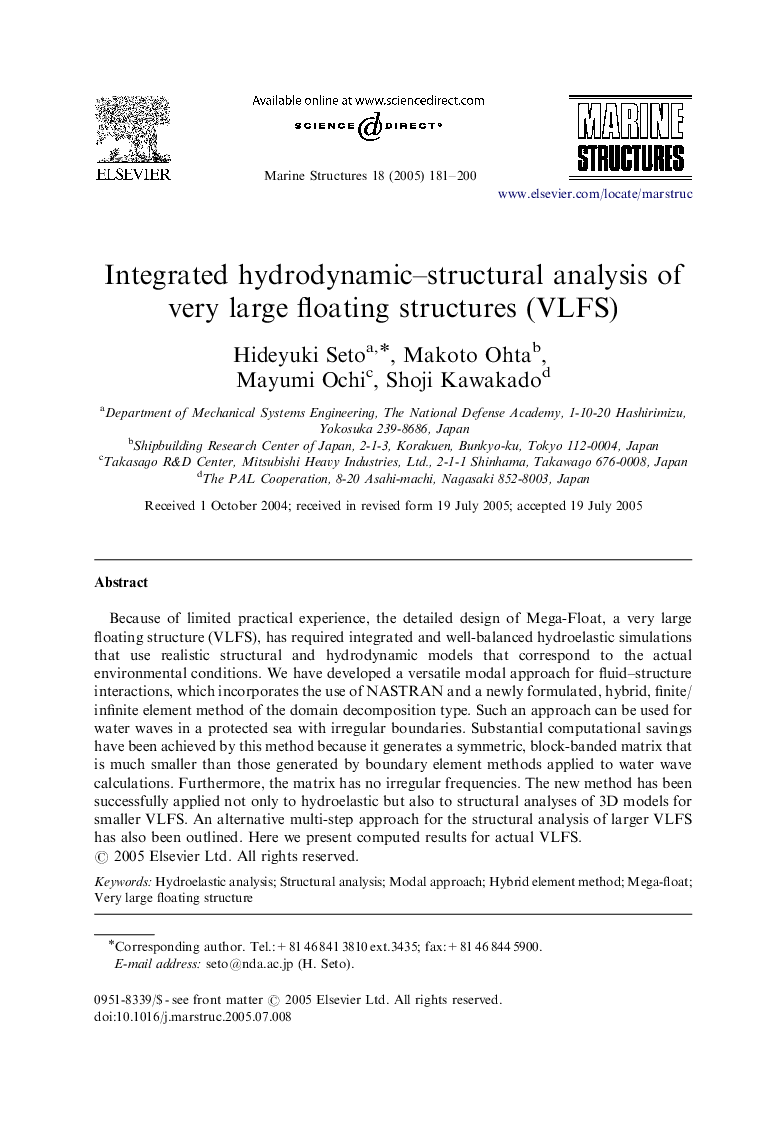| Article ID | Journal | Published Year | Pages | File Type |
|---|---|---|---|---|
| 10292694 | Marine Structures | 2005 | 20 Pages |
Abstract
Because of limited practical experience, the detailed design of Mega-Float, a very large floating structure (VLFS), has required integrated and well-balanced hydroelastic simulations that use realistic structural and hydrodynamic models that correspond to the actual environmental conditions. We have developed a versatile modal approach for fluid-structure interactions, which incorporates the use of NASTRAN and a newly formulated, hybrid, finite/infinite element method of the domain decomposition type. Such an approach can be used for water waves in a protected sea with irregular boundaries. Substantial computational savings have been achieved by this method because it generates a symmetric, block-banded matrix that is much smaller than those generated by boundary element methods applied to water wave calculations. Furthermore, the matrix has no irregular frequencies. The new method has been successfully applied not only to hydroelastic but also to structural analyses of 3D models for smaller VLFS. An alternative multi-step approach for the structural analysis of larger VLFS has also been outlined. Here we present computed results for actual VLFS.
Related Topics
Physical Sciences and Engineering
Engineering
Civil and Structural Engineering
Authors
Hideyuki Seto, Makoto Ohta, Mayumi Ochi, Shoji Kawakado,
